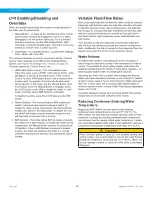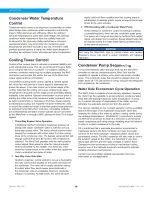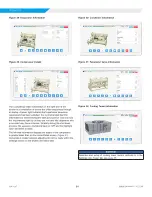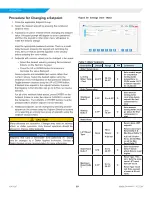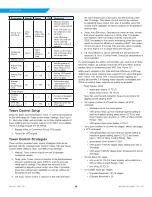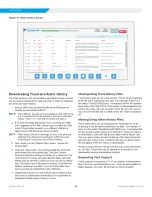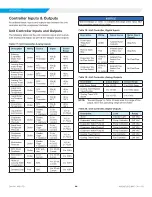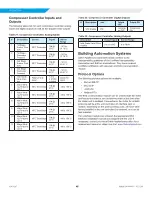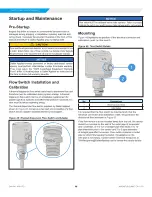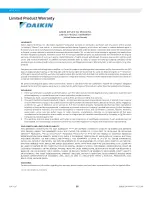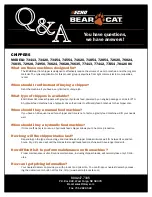
41
IOM 1297
WWW.DAIKINAPPLIED.COM
OPERATION
Alarms
The Alarm information is accessed by touching the ALARM icon
at the bottom of the HMI and then the Active or History tabs at the
top of the screen. An active alarm will turn the icon flashing red.
There are two types of alarms:
1 .
Critical Alarm (Red)
- This is an equipment protection
alarm that will shut a unit or compressor off if not corrected.
2 .
Warning (Yellow)
- This alarm limits compressor loading
in response to an out-of-normal condition or may only be a
notification to indicate that the condition requires attention.
This alarm may not cause a shutdown. If the condition
that caused a warning is corrected, the alarm light will be
cleared automatically.
The Alarm Active and History Screens display a maximum of 18
alarms for the current date with the most current alarms listed on
top. Each alarm displays the date stamp, action taken, and the
cause of the alarm. See the Alarm tables starting on
for specifics on alarms that may occur. Alarm history data is held
for 365 days as shown on the Interface tab in
.
Digital Alarm Output
On the field wiring diagram there is an option for the customer
to wire to a digital alarm output. There is both a normally
closed (NC) and normally open (NO) option depending on if the
customer wants a contact that opens on alarm (NC) or a contact
that closes on alarm (NO). Alarm state will maintain until the
alarm is cleared. Note that by default the digital alarm output
will trigger on all critical alarms, including critical alarms that are
displayed as warnings and auto-cleared. Changing the Alarm
Output on Auto Clear HMI setting to false will suppress the digital
alarm output for auto-cleared critical alarms that are able to be
cleared automatically.
Clearing an Alarm
There are two different indicators that the chiller will generate
when conditions arise that are affecting the chiller operations.
Warnings are indicated in yellow on the HMI and communicate
that the chiller should be serviced but allow the chiller to keep
running. Warnings cannot be cleared manually and will be
cleared automatically when the issues has been resolved.
Critical Alarms will always shutoff the chiller and Critical Alarms
that do not require external intervention may attempt to auto-clear
once conditions return to normal (Pressure and Temperature
Alarms). Auto-cleared Critical Alarms will be yellow and will be
displayed as warnings unless there has been 3 within the hour.
After 3 alarms occur within the hour, the Critical Alarm will be
displayed as a Critical Alarm by being indicated in Red on the
HMI and will prevent the chiller from running until manually
cleared at the HMI or via the BAS. Critical Alarms that require
external intervention (Communication and Sensor Alarms) will
immediately show up as Red Alarms on the HMI and prevent the
chiller from running until manually cleared at the HMI or via the
BAS, after the condition has been resolved.
Repeated manual clearing of Critical Alarms via the HMI or the
BAS without resolving the cause of the Alarm may damage the
chiller and void the chiller warranty.
Although the Alarm History Screen only displays the most current
alarms, a record of ALL alarms is stored in the Unit Control
Processor. Note that this record may include alarms that occurred
when the chiller was not yet fully assembled in the factory.
This record is maintained even if the Unit Control Processor
is powered off. When the HMI is powered back on, the last 18
alarms for the current date will show on the Alarm History Screen
and all alarm history will still be available for download.

